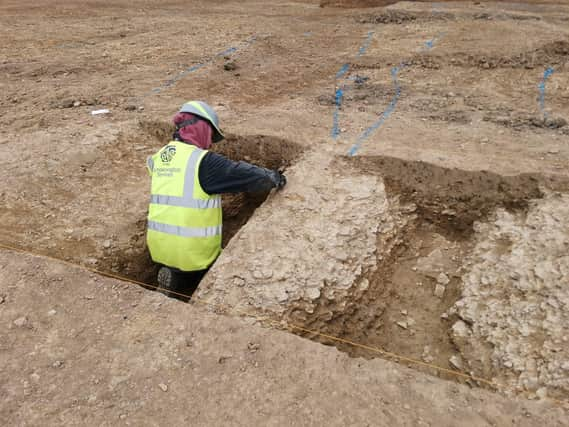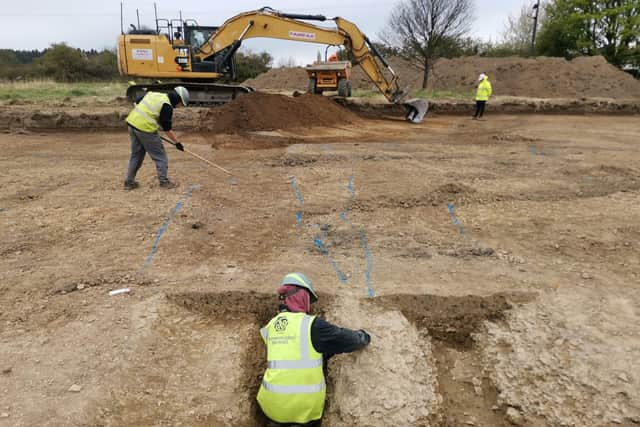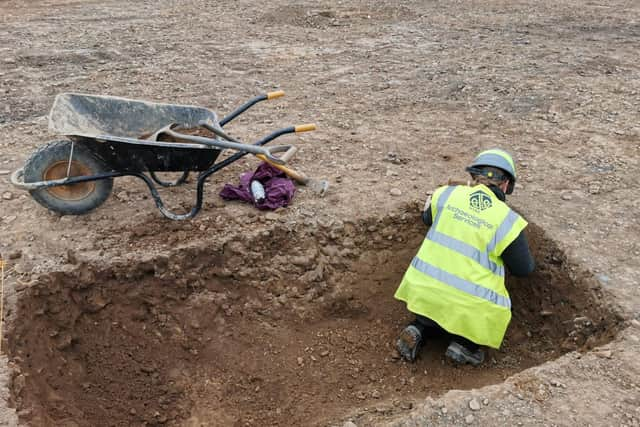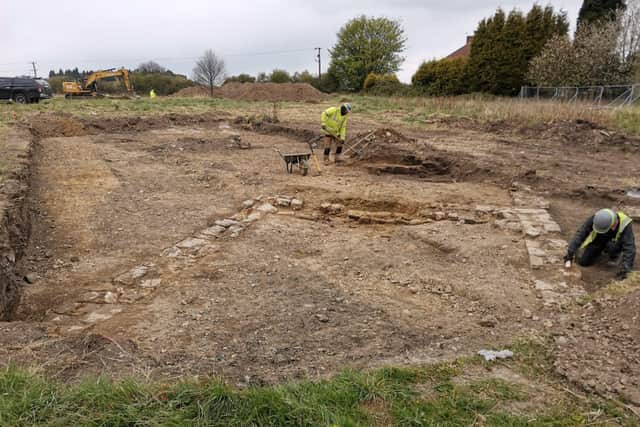First photos from scene of 'exciting' new archaeological dig in Wakefield village


The team working on the site in Kinsley, near Fitzwilliam, said they had already made "exciting" discoveries on the site, including a rare kiln believed to date back to Roman times.
The important work could help unlock fresh insights into the lives of people living in the area up to 2,000 years ago.
Advertisement
Hide AdAdvertisement
Hide AdThe dig is being carried out by the West Yorkshire Joint Services’ Archaeological Services, backed by Wakefield Council.


And archaeologists hope that the discovery of the rare kilns could help further understanding of what life was like in the area in years gone by.
Clare Elliott, Service Director for Economic Growth and Skills at Wakefield Council, said:“We are very pleased to have appointed West Yorkshire Joint Services’ Archaeological Services to investigate land at Farm Lane, Kinsley near Fitzwillliam for evidence of Roman life.
“This fascinating work could unlock fresh knowledge and insight into the lives of people living in our district in the Roman period.
Advertisement
Hide AdAdvertisement
Hide Ad“It is very exciting as they have discovered a kiln on the site - it is the second kiln to be found in the vicinity - the first kiln was discovered during an earlier dig in January 2020.


“Evidence that flagons were being produced here – large pots were also discovered at this time – demonstrate the work people were undertaking in this area.
“The experts are now exploring the site in detail, which has been secured, while this important work is underway.
“They are at the early stage of their work – and at a future date, and in line with the latest government Covid guidance, we would hope to offer opportunities for local residents to visit the site and learn more about the land and the discoveries beneath their feet.”
Advertisement
Hide AdAdvertisement
Hide AdLarge areas of the field have been fenced off while work is carried out, but the main footpath between Newstead Terrace and Sunnyfield Drive remains open to walkers.


But while the dig is exciting, it is far from the only important archaeological discovery to have taken place in the Wakefield district.
In 2017, developers in Pontefract were shocked to discover more than 30 Roman skeletons, alongside pottery, jewellery and building remains, while working on new houses.
The skeletons, which are believed to date from around 200AD, were described as a “unique” find.
Advertisement
Hide AdAdvertisement
Hide AdA few years earlier, in 2005, contractors in Ferrybridge stumbled across a 2,400 year old chariot burial site while working on an upgrade of the A1.
Subsequent work on the Iron Age remains led researchers to believe it may have been the burial site of on of Britain’s ancient tribal leaders.
And in 2017, a Wakefield mother searching for a missing bolt from a garden strimmer was shocked to discover 17 silver-bronze Roman coins, believed to date back to between 335AD and 402AD.
Other significant developments have included ongoing work at Pontefract Castle and Sandal Castle, which have stood for 1,000 and 800 years respectively.
Advertisement
Hide AdAdvertisement
Hide AdExciting findings at the sites include a 500-year-old ring found in Sandal which bears the inscription “I’m all yours” in medieval French, and the uncovering of a medieval drawbridge in Pontefract.
The district’s Roman heritage is also celebrated with the annual Castleford Roman Festival.
Susan Betteridge, Director of West Yorkshire Joint Services said: “Our archaeologists are particularly excited to be working on this site as Roman kilns are a rare phenomenon in West Yorkshire.
“I can’t wait to see what more they might find.”